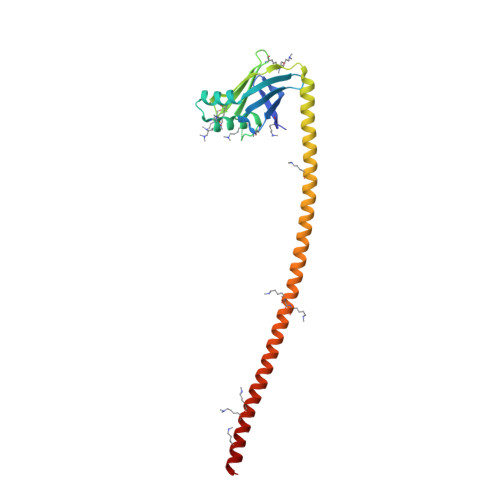A composite approach towards a complete model of the myosin rod.
Korkmaz, E.N., Taylor, K.C., Andreas, M.P., Ajay, G., Heinze, N.T., Cui, Q., Rayment, I.(2016) Proteins 84: 172-189
- PubMed: 26573747
- DOI: https://doi.org/10.1002/prot.24964
- Primary Citation of Related Structures:
5CHX, 5CJ0, 5CJ1, 5CJ4 - PubMed Abstract:
Sarcomeric myosins have the remarkable ability to form regular bipolar thick filaments that, together with actin thin filaments, constitute the fundamental contractile unit of skeletal and cardiac muscle. This has been established for over 50 years and yet a molecular model for the thick filament has not been attained. In part this is due to the lack of a detailed molecular model for the coiled-coil that constitutes the myosin rod. The ability to self-assemble resides in the C-terminal section of myosin known as light meromyosin (LMM) which exhibits strong salt-dependent aggregation that has inhibited structural studies. Here we evaluate the feasibility of generating a complete model for the myosin rod by combining overlapping structures of five sections of coiled-coil covering 164 amino acid residues which constitute 20% of LMM. Each section contains ∼ 7-9 heptads of myosin. The problem of aggregation was overcome by incorporating the globular folding domains, Gp7 and Xrcc4 which enhance crystallization. The effect of these domains on the stability and conformation of the myosin rod was examined through biophysical studies and overlapping structures. In addition, a computational approach was developed to combine the sections into a contiguous model. The structures were aligned, trimmed to form a contiguous model, and simulated for >700 ns to remove the discontinuities and achieve an equilibrated conformation that represents the native state. This experimental and computational strategy lays the foundation for building a model for the entire myosin rod.
Organizational Affiliation:
Department of Chemistry and Theoretical Chemistry Institute, University of Wisconsin, Madison, WI 53706, USA.















